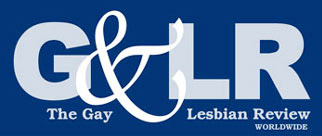Get more! Sign up for PLANSPONSOR newsletters.
Transamerica Launches Financial Educators Academy
Transamerica Retirement Solutions has partnered with the National Financial Educators Council (NFEC) to create the Transamerica Financial Educators Academy, an online program that enables people to become Certified Financial Education Instructors (CFEIs).
To attain this certification, participants need to complete
11 courses covering: financial psychology; savings, budgeting and account
management; credit, debt and loans; investing; retirement preparedness; and how
to effectively discuss money matters with young people.
Transamerica’s goal is to promote greater personal financial knowledge among
Americans by teaching them the basics of successful money management, Deb
Rubin, senior vice president at Transamerica Retirement Solutions tells PLANSPONSOR. Transamerica wants to encourage behavior modification by
motivating, educating and engaging Americans to take charge of their finances,
she says.
“Transamerica is committed to helping individuals and families make informed
decisions that will enable them to achieve long-term financial security,” Rubin
says. “We recognize that too many Americans lack the essential knowledge to
make those decisions and would like to better understand the basics of personal
finance. The Transamerica Financial Educators Academy offers an effective
process for individuals to become certified to teach others in their
communities and help them improve their financial outlook [and] become more
confident about their financial futures.”
Vince Shorb, president of the National Financial Educators Council, adds: “This
grassroots approach has the potential to create better household money
management in more communities.”
NEXT: How the program is taught
Transamerica estimates that it will
take between 12 and 20 hours for those who are not financial
professionals to complete the program. For those who are financial
professionals, the estimated learning time is eight to 12 hours. The
program consists of seven hours of online webinar content, along with a
textbook they need to read and study. Once participants complete the
coursework, they must take an exam and get a grade of 75 out of 100 or
better. If they don’t pass on the first try, they are given a second
chance. The program also requires graduates to participate in continuing
education, in order to keep up with developments in financial
education.
The National Financial Educators Council provides the
educational materials that those who are certified can use to teach
others about financial literacy. NFEC also provides promotional
materials that educators can use to encourage people to participate in
their financial education lessons.
The program was designed for educators to deliver the advice in person, Rubin says. However, some educators are using the content as a series of webinars. The modules range from the basics, to intermediate to advanced, she says.
Rubin
says the Transamerica Financial Educators Academy certification program
is equally useful for plan sponsors and plan advisers. “I found a
hunger in the plan adviser community for non-branded educational
materials that they could use to teach financial literacy,” she says. In
addition, “A number of plan sponsors have reached out to me directly
because they want to leverage their own employees to teach others about
financial literacy.”
The cost to be certified is $187, and NFEC
charges $77 for use of its educational materials in the first year.
After that, educators have to pay $77 each year to remain certified and
another $77 each year to use the materials.
More information about the program is available here.



